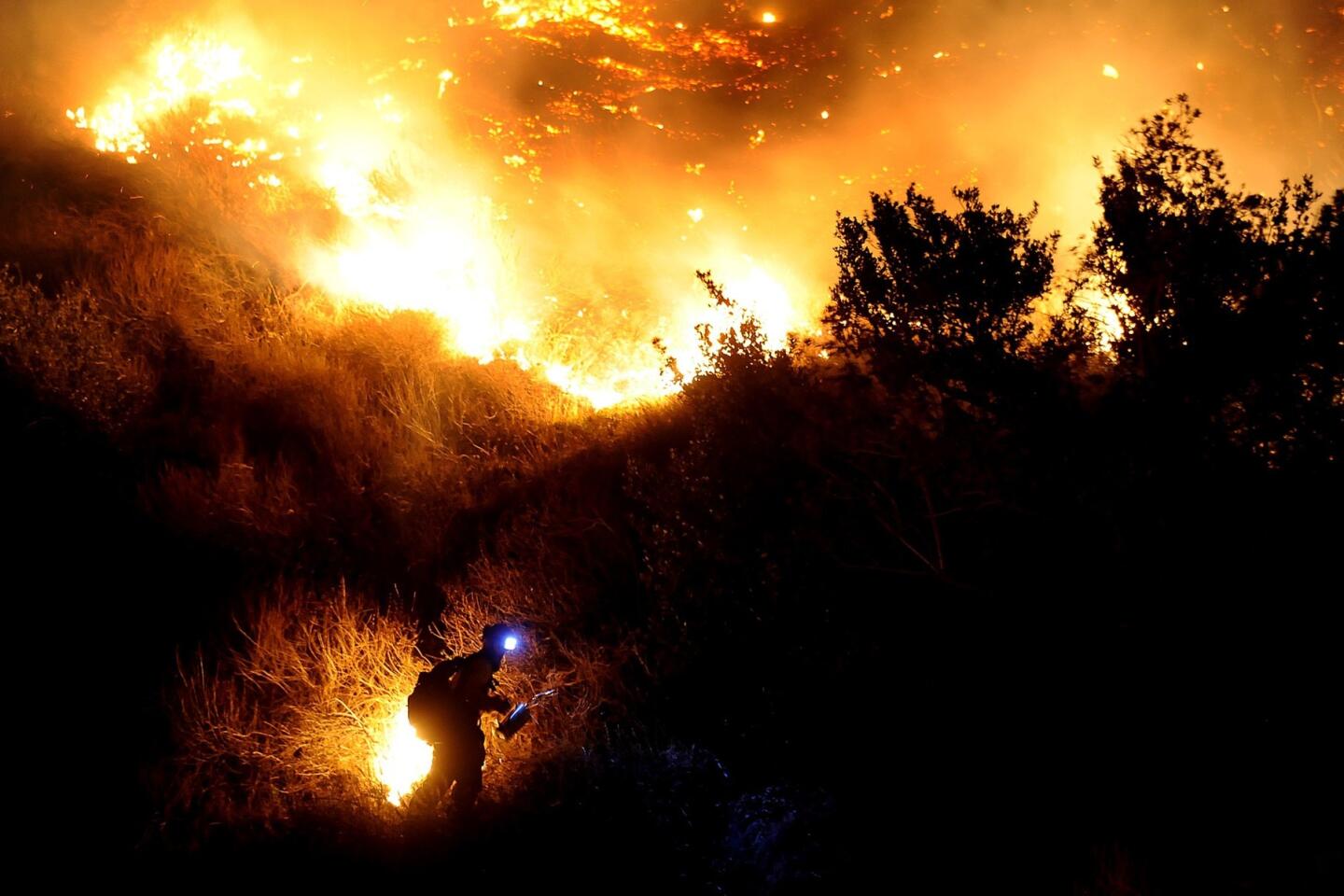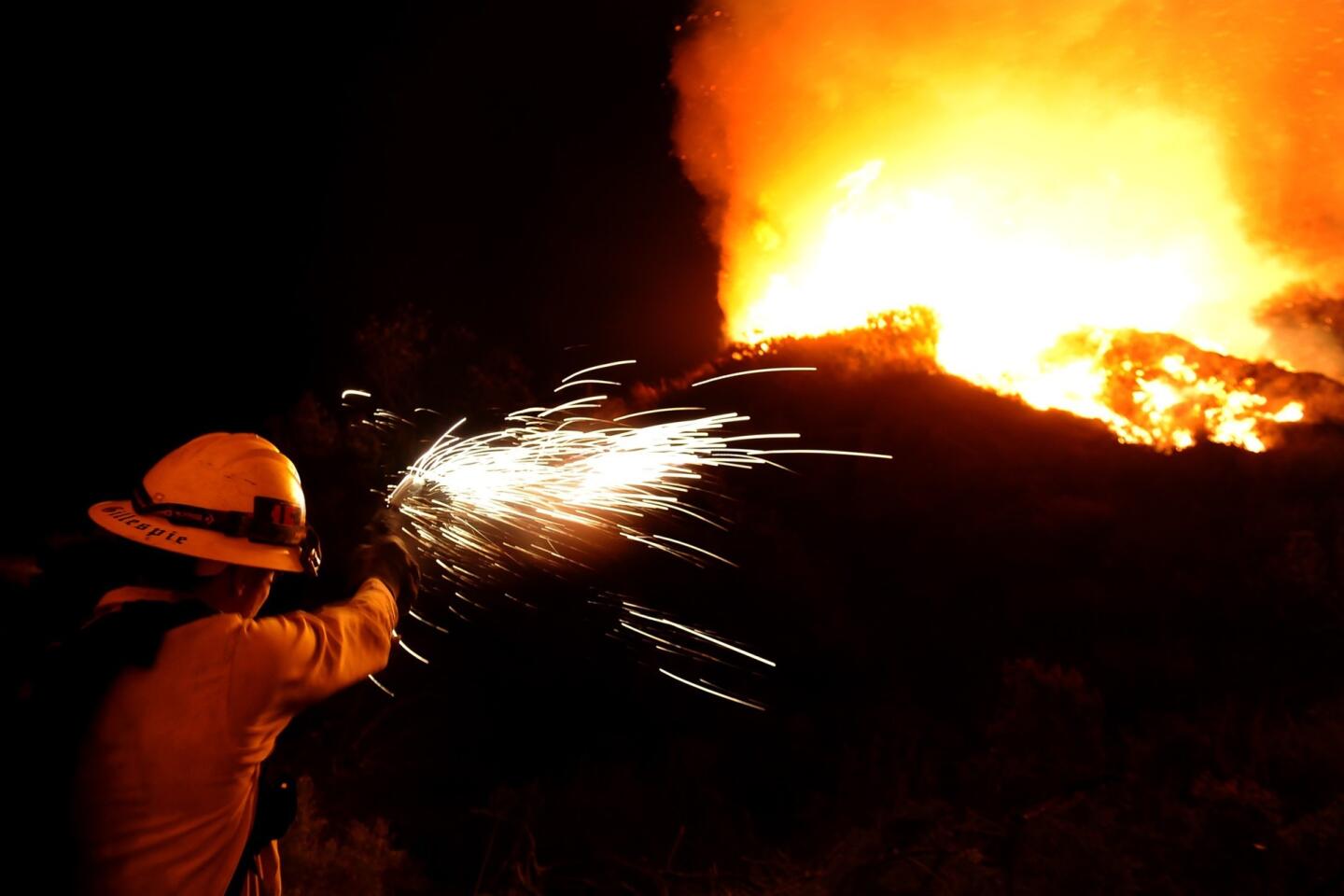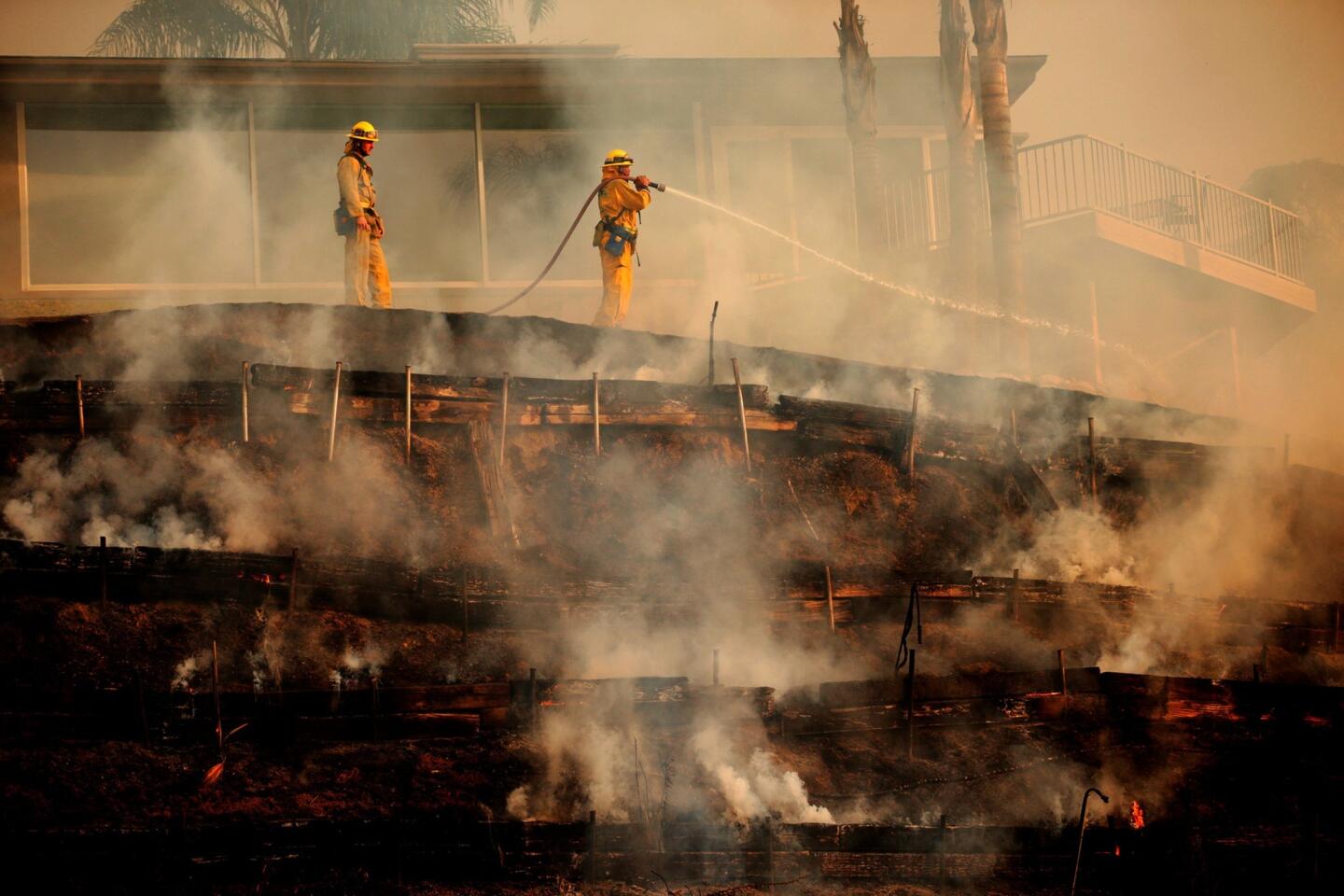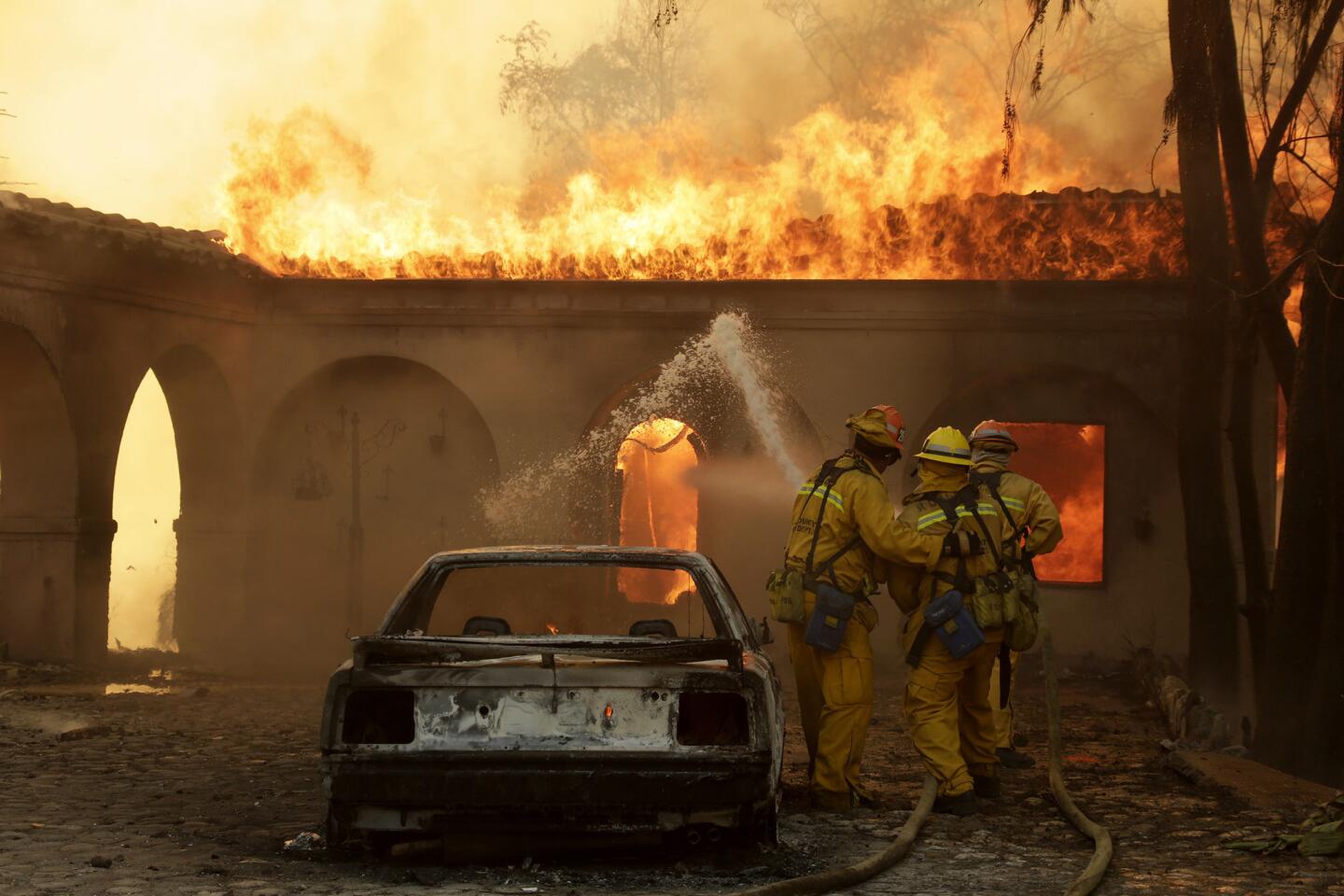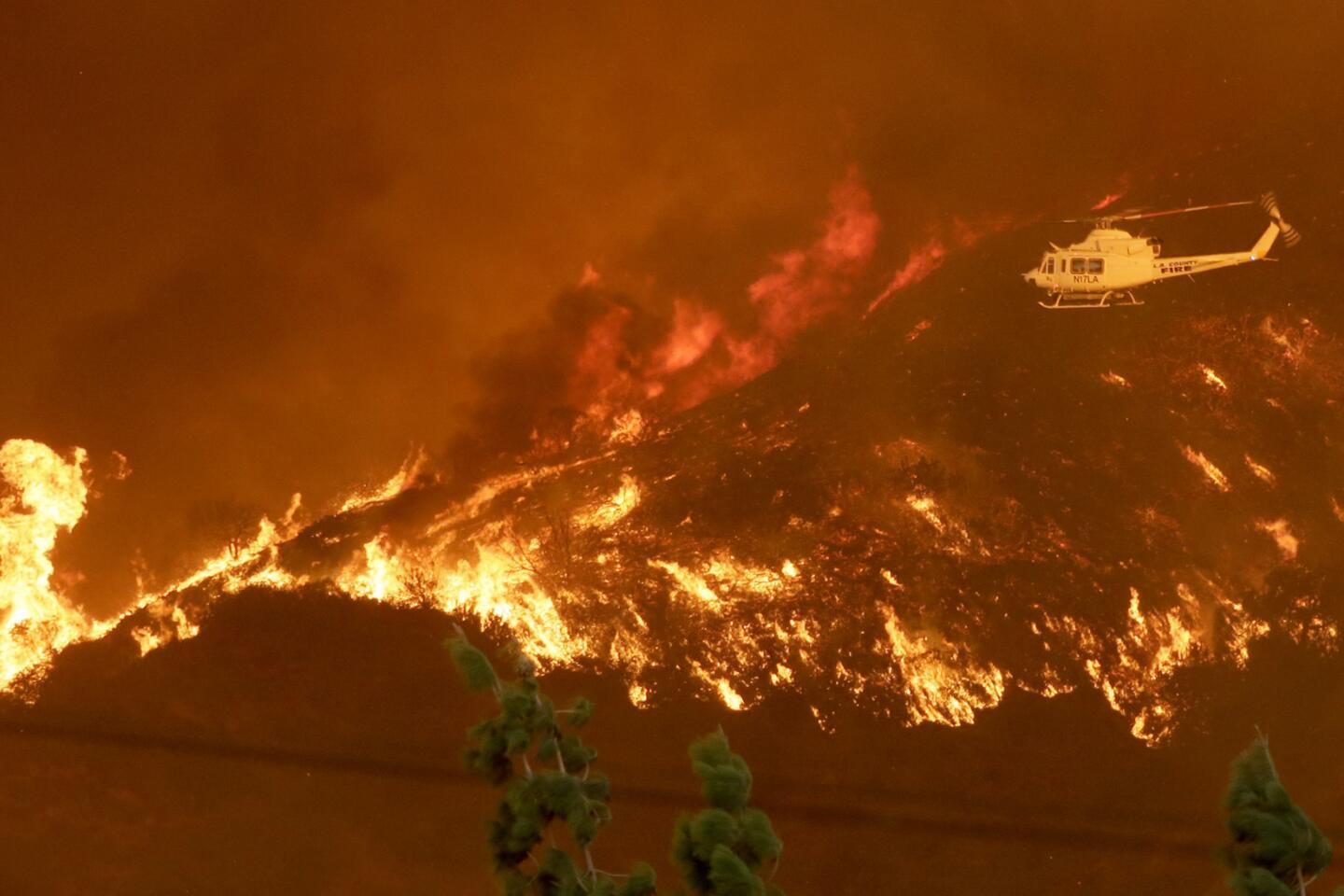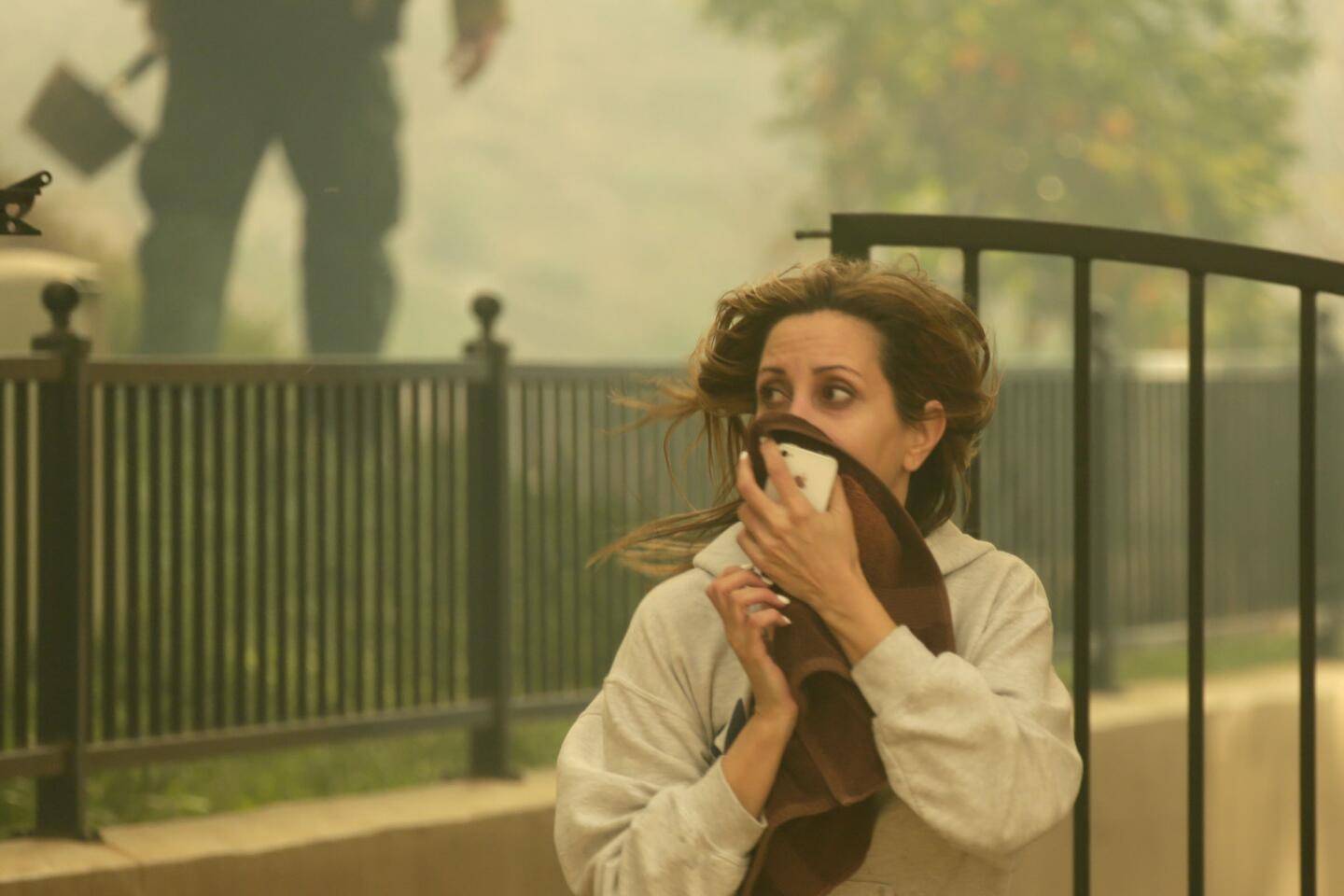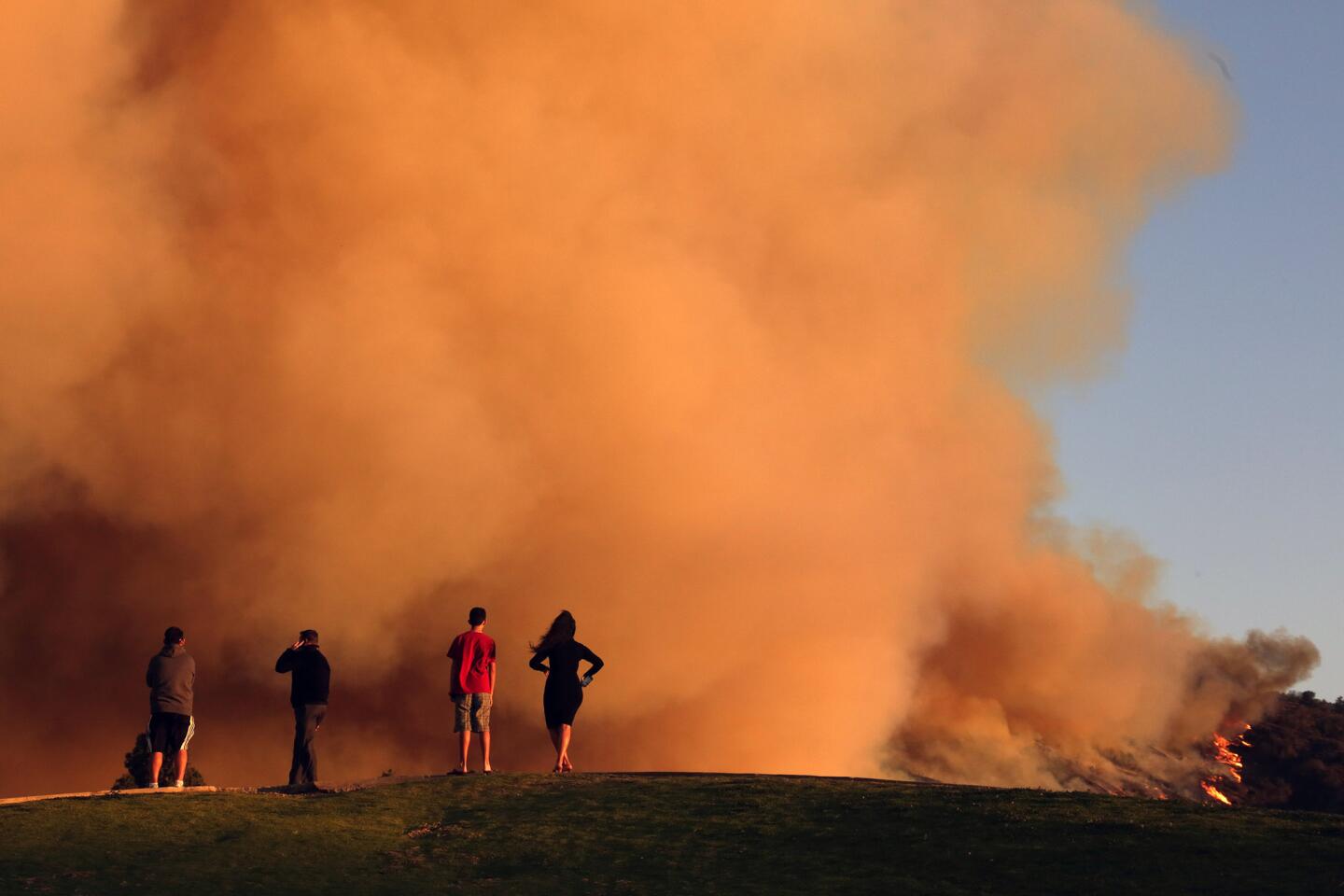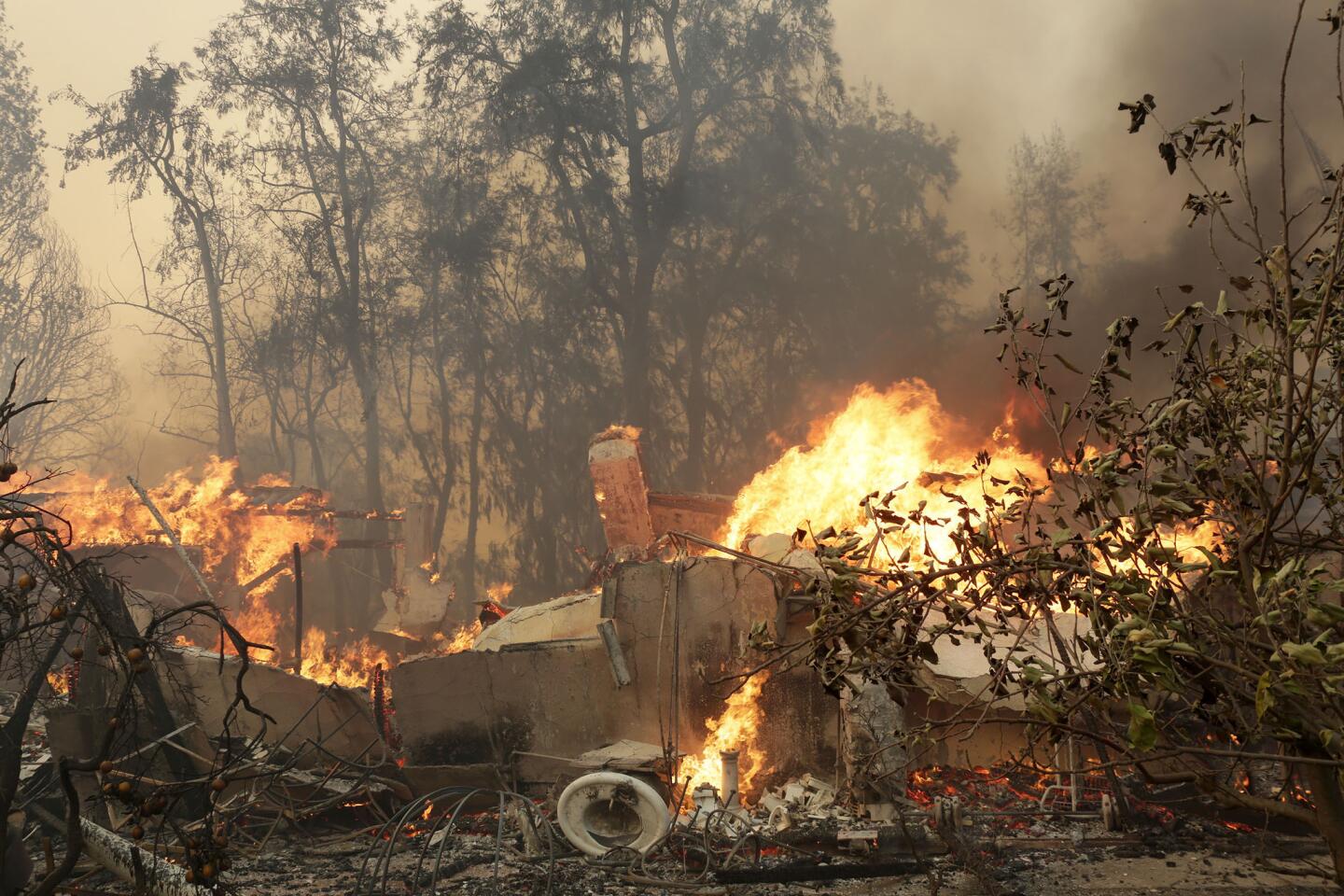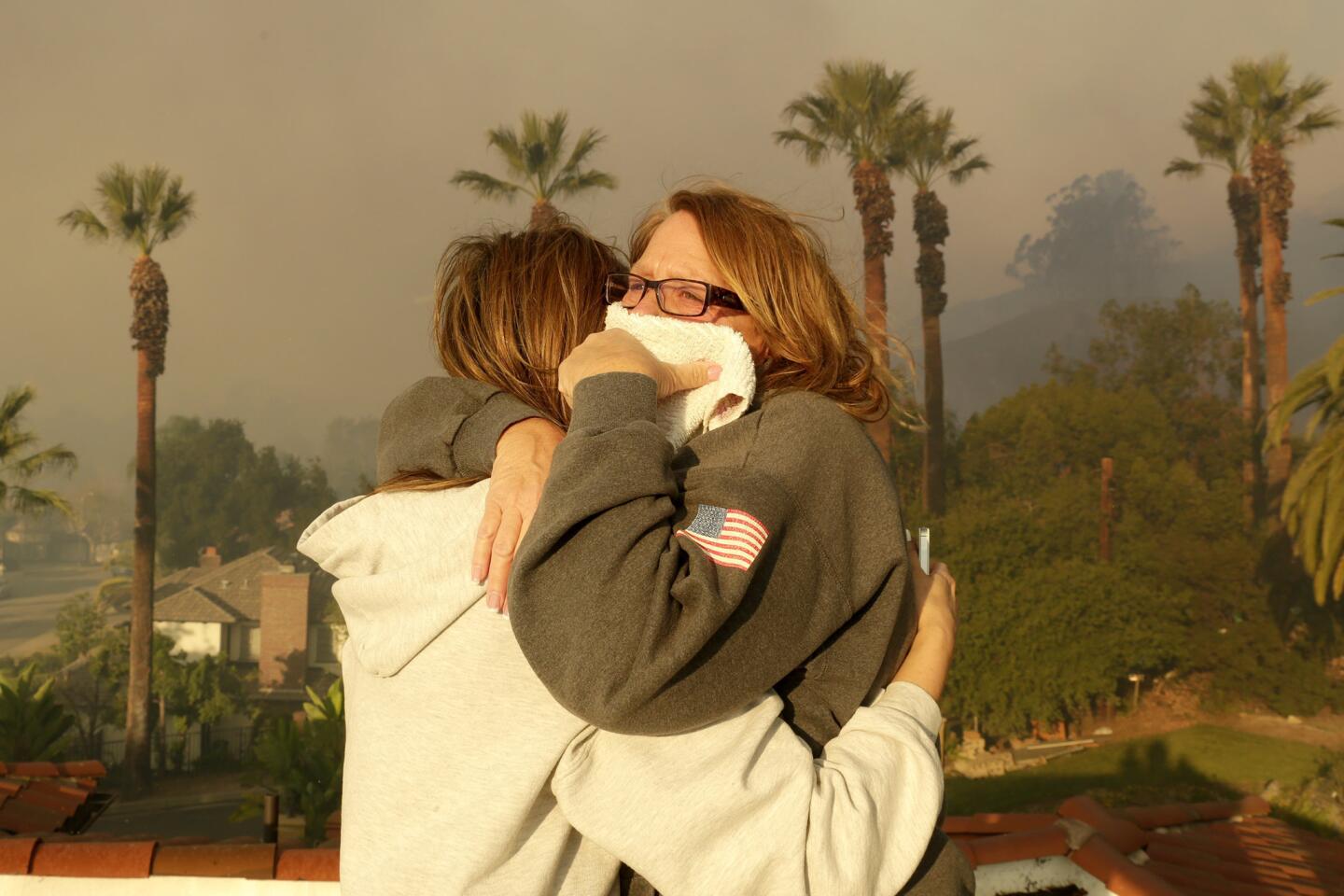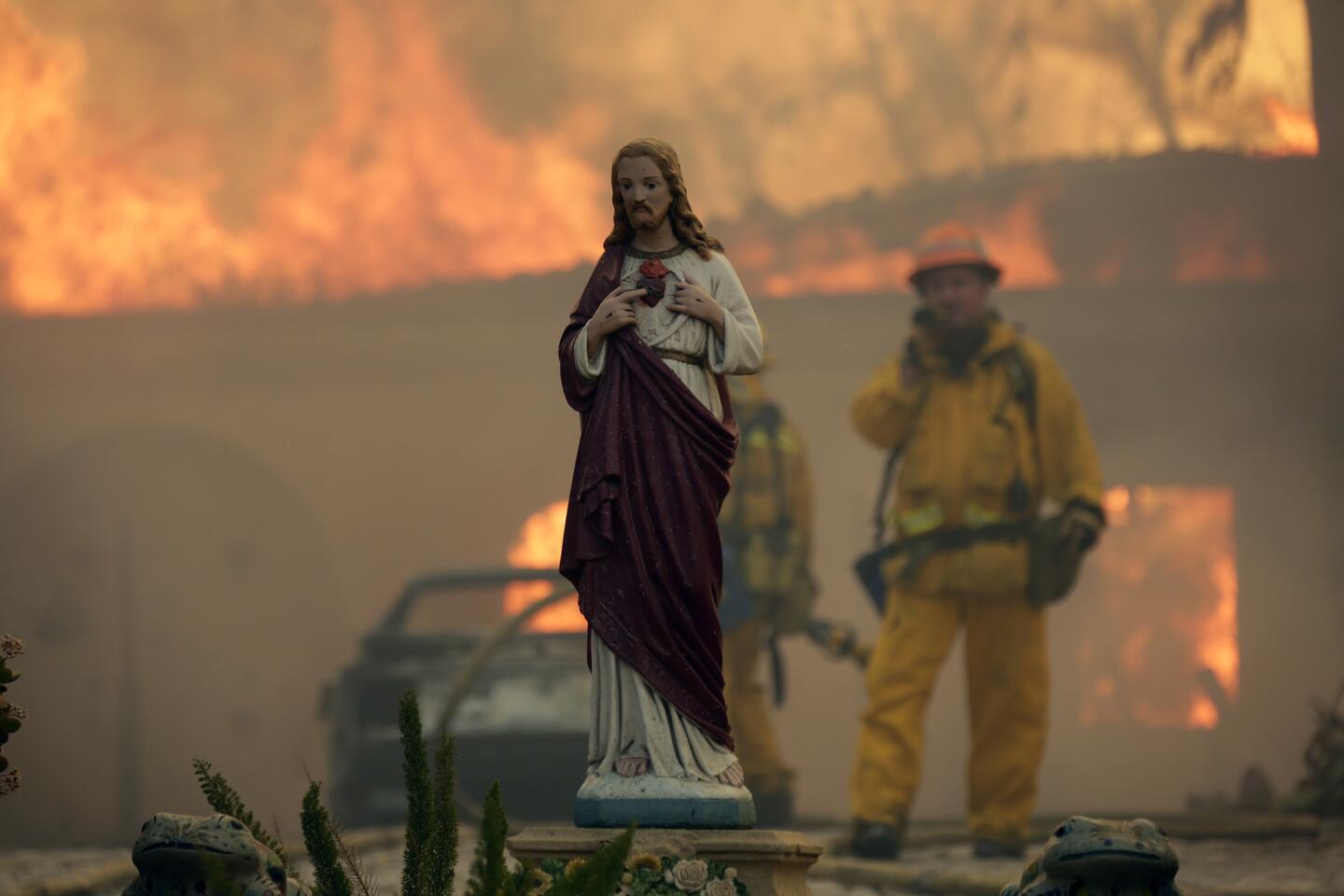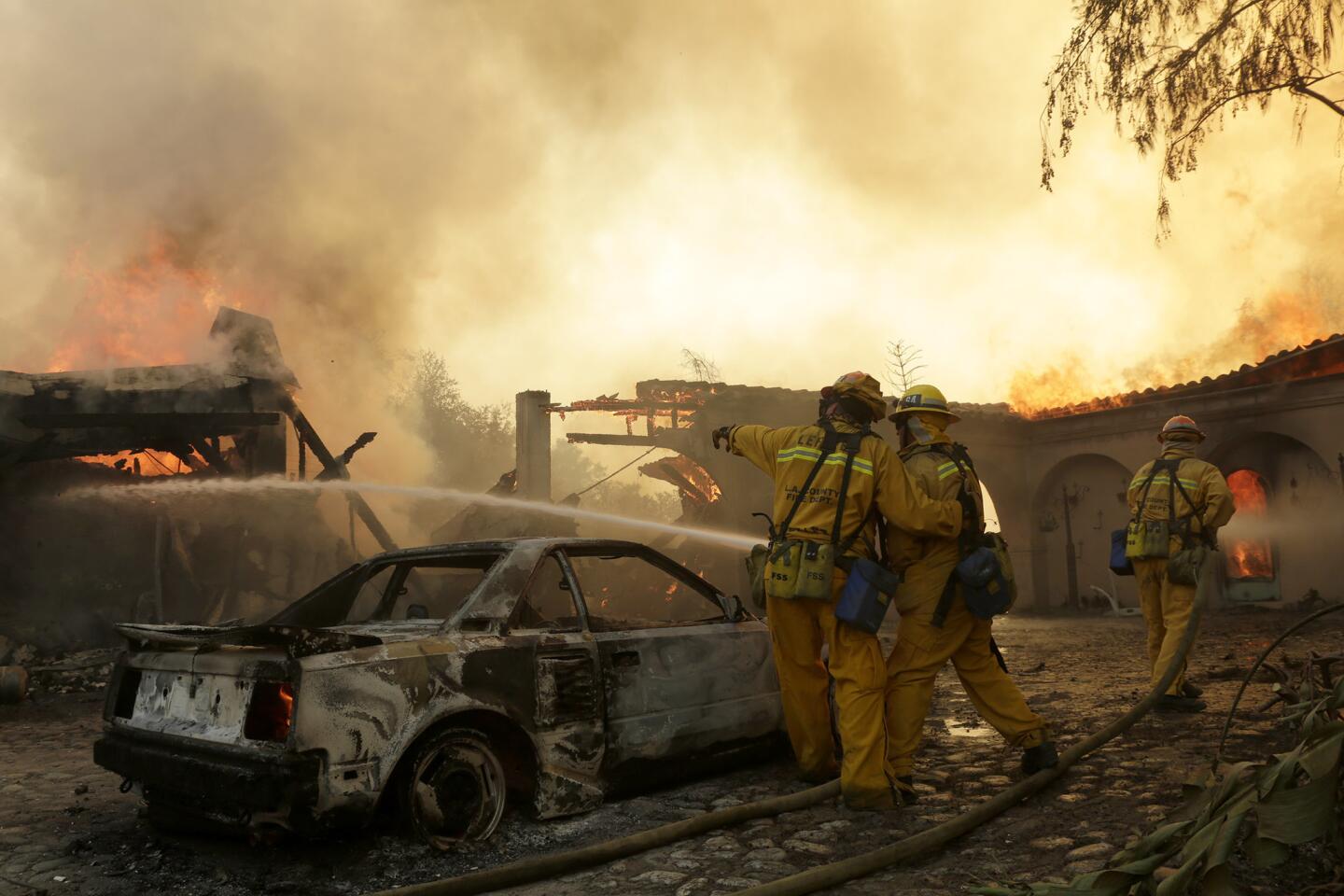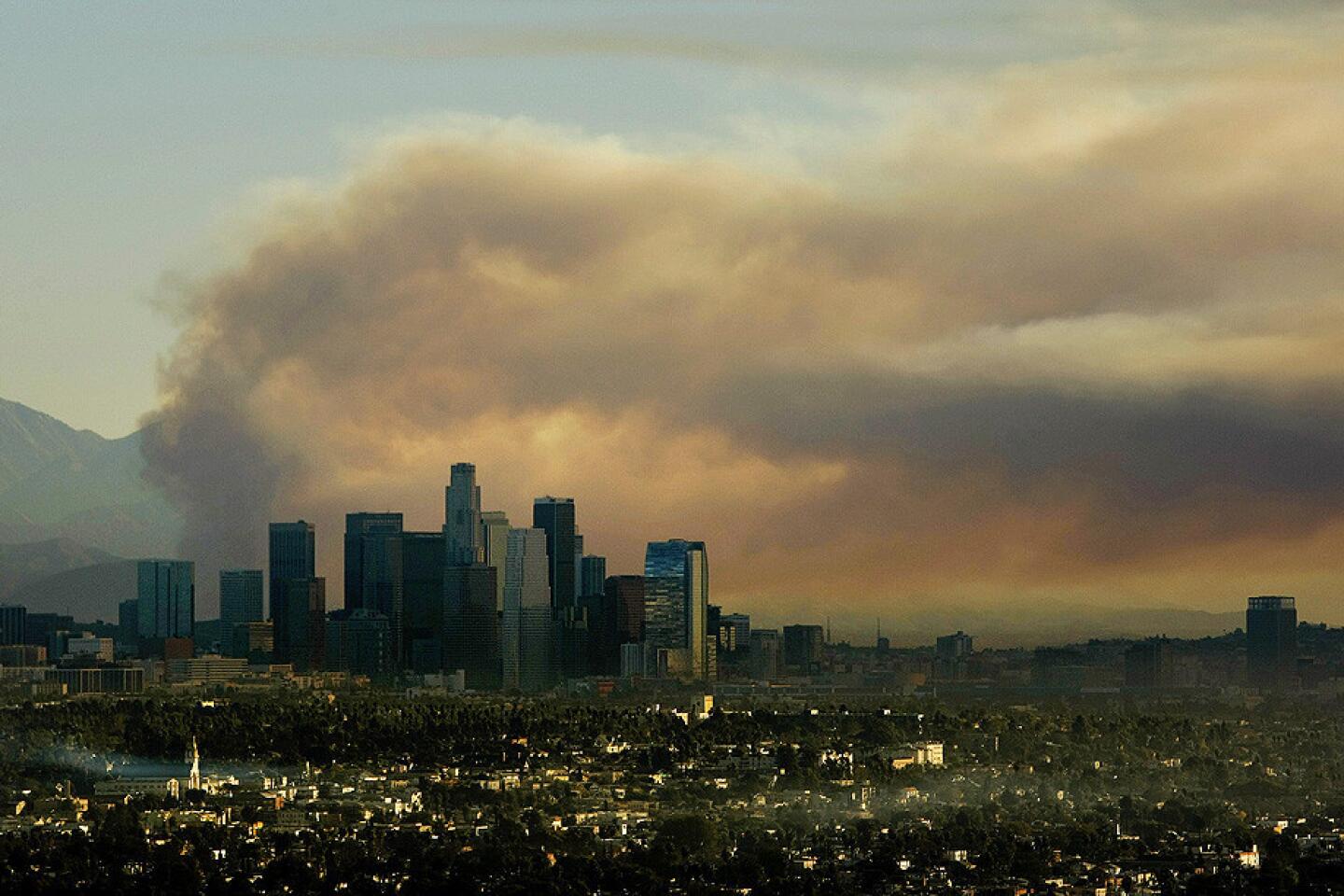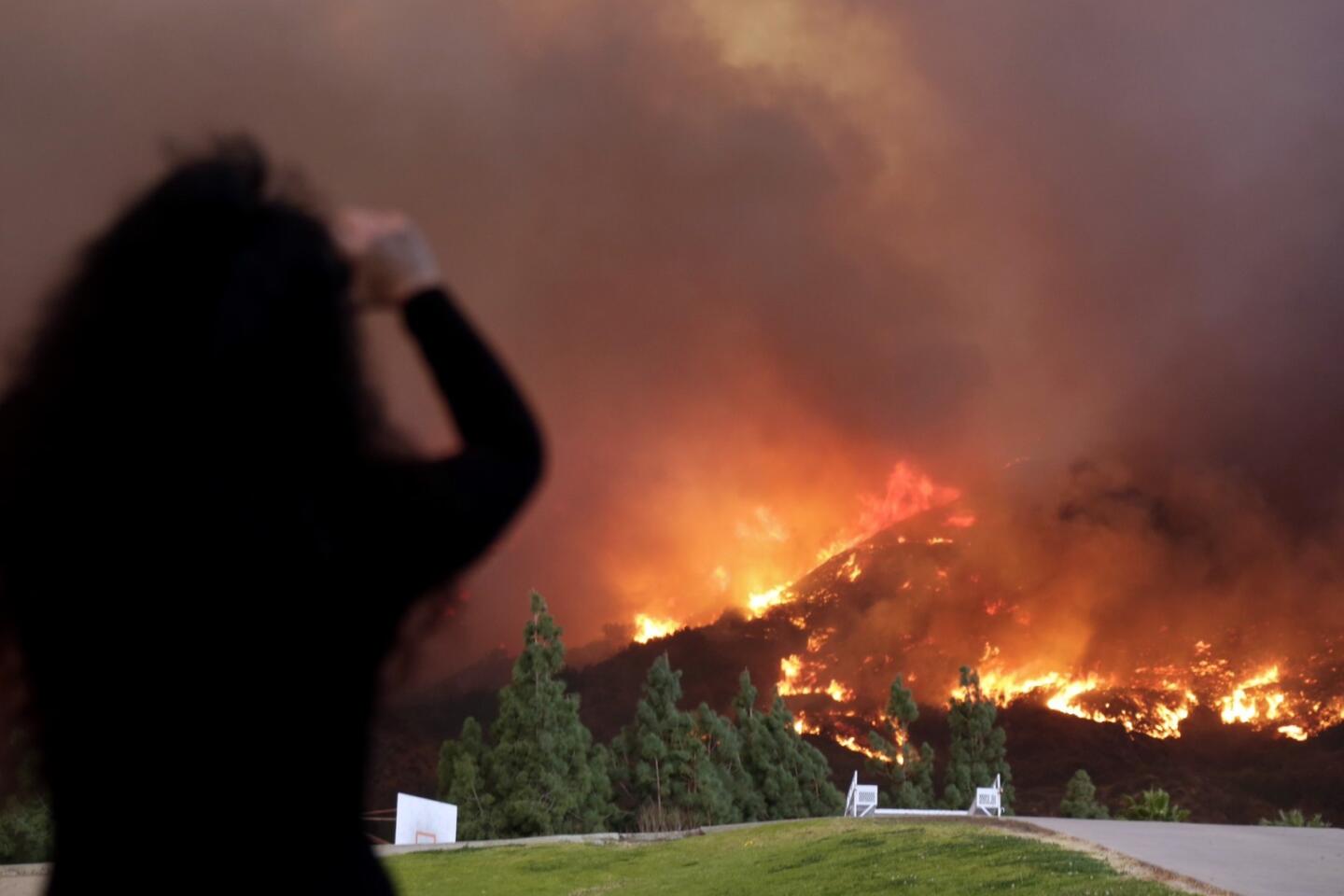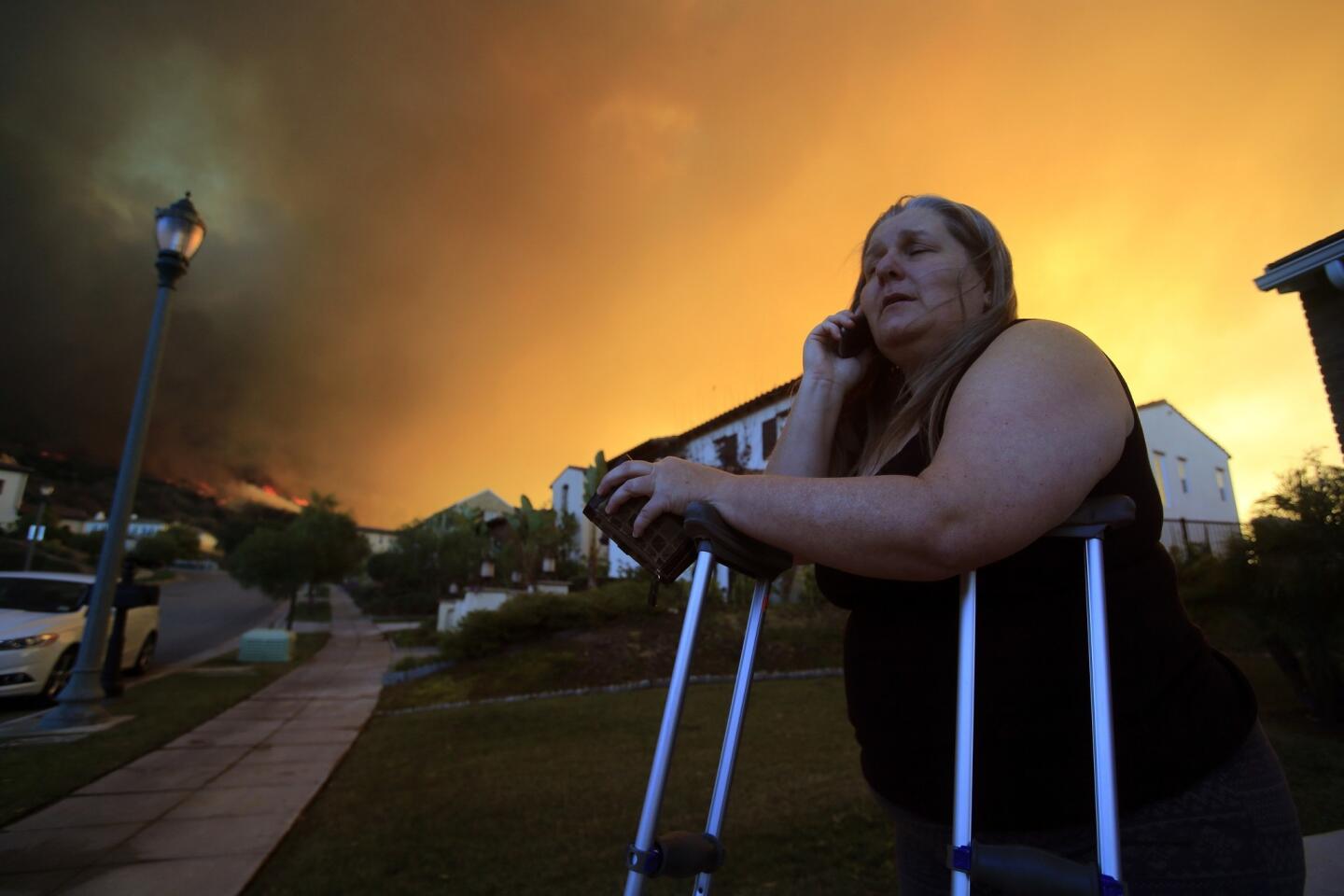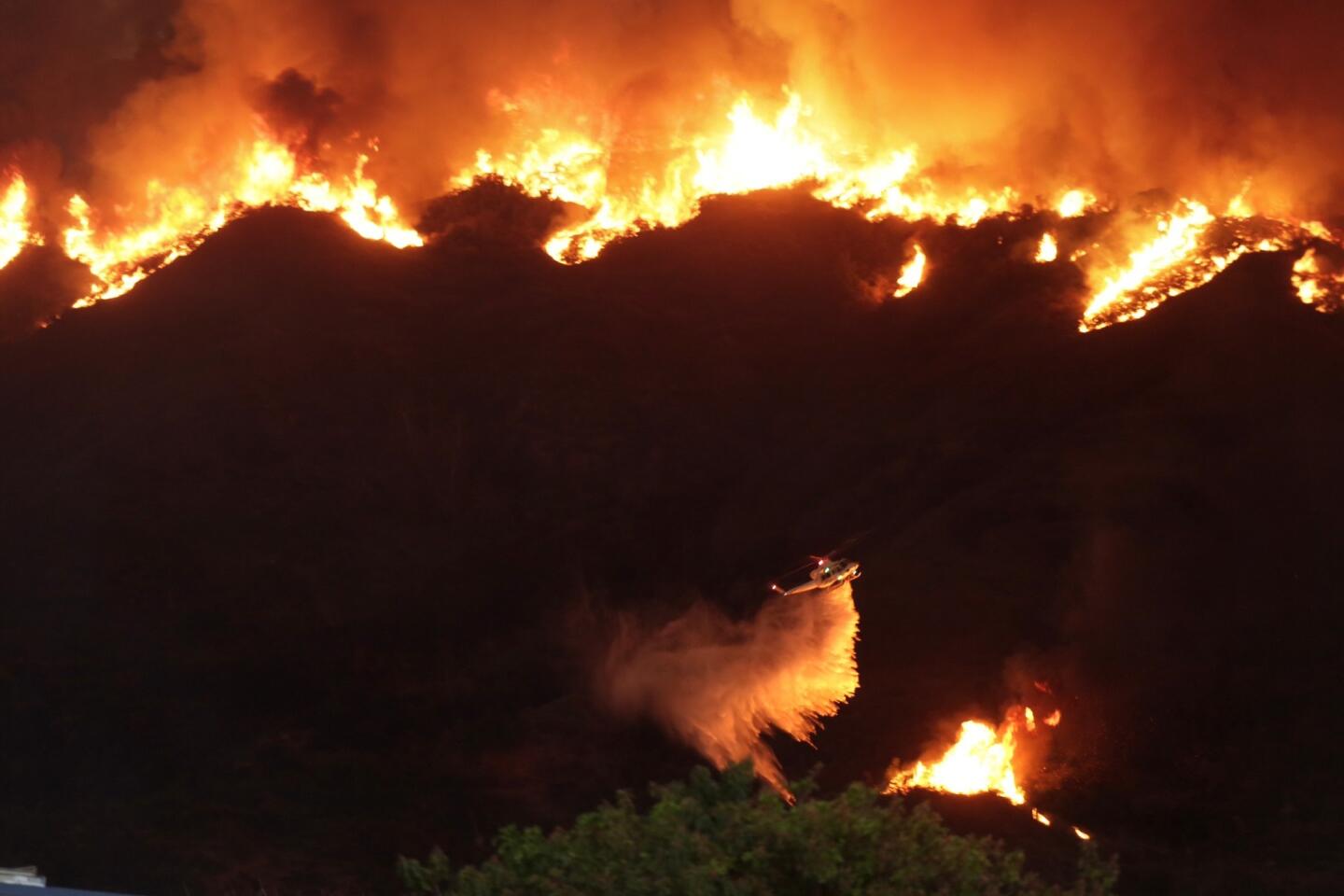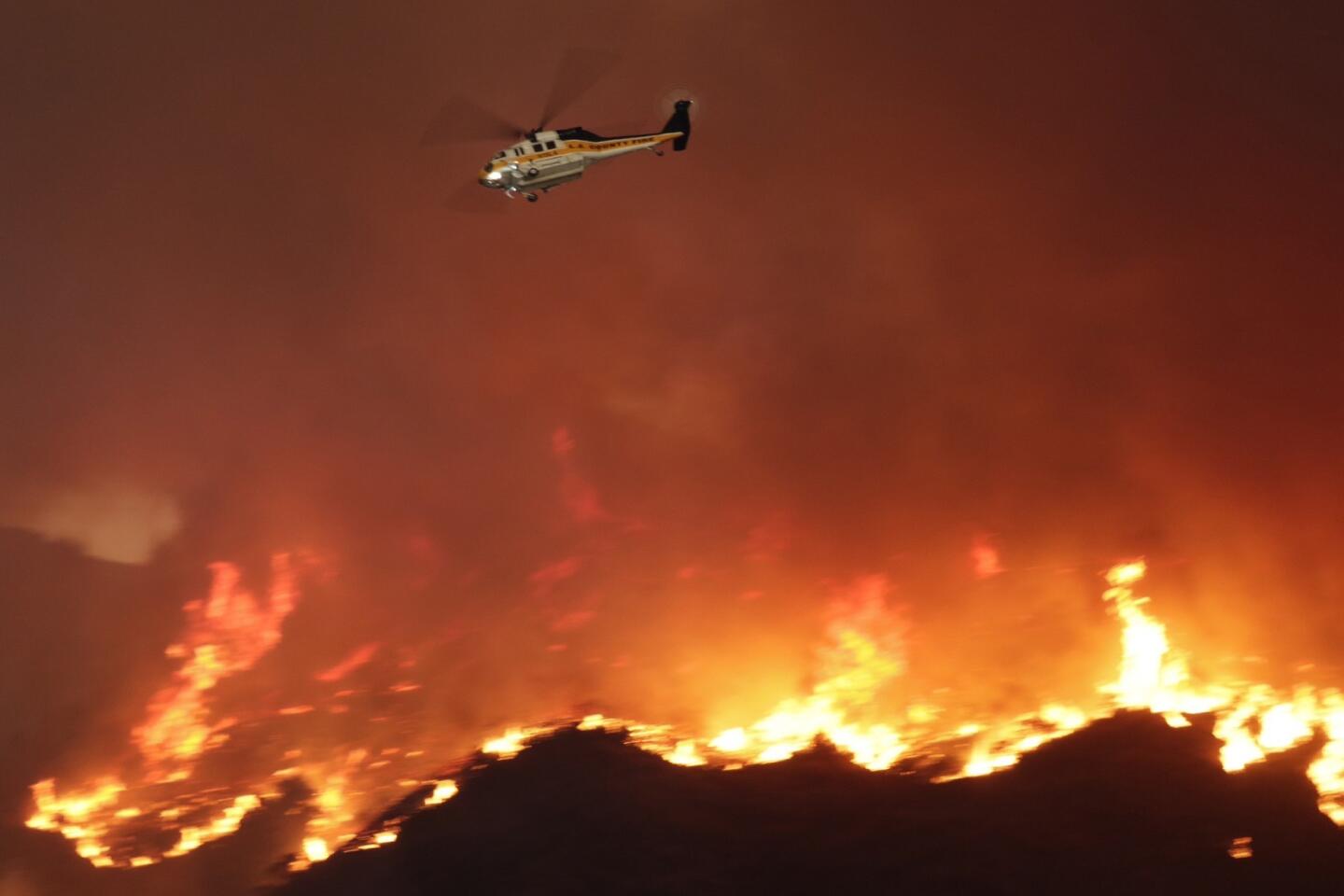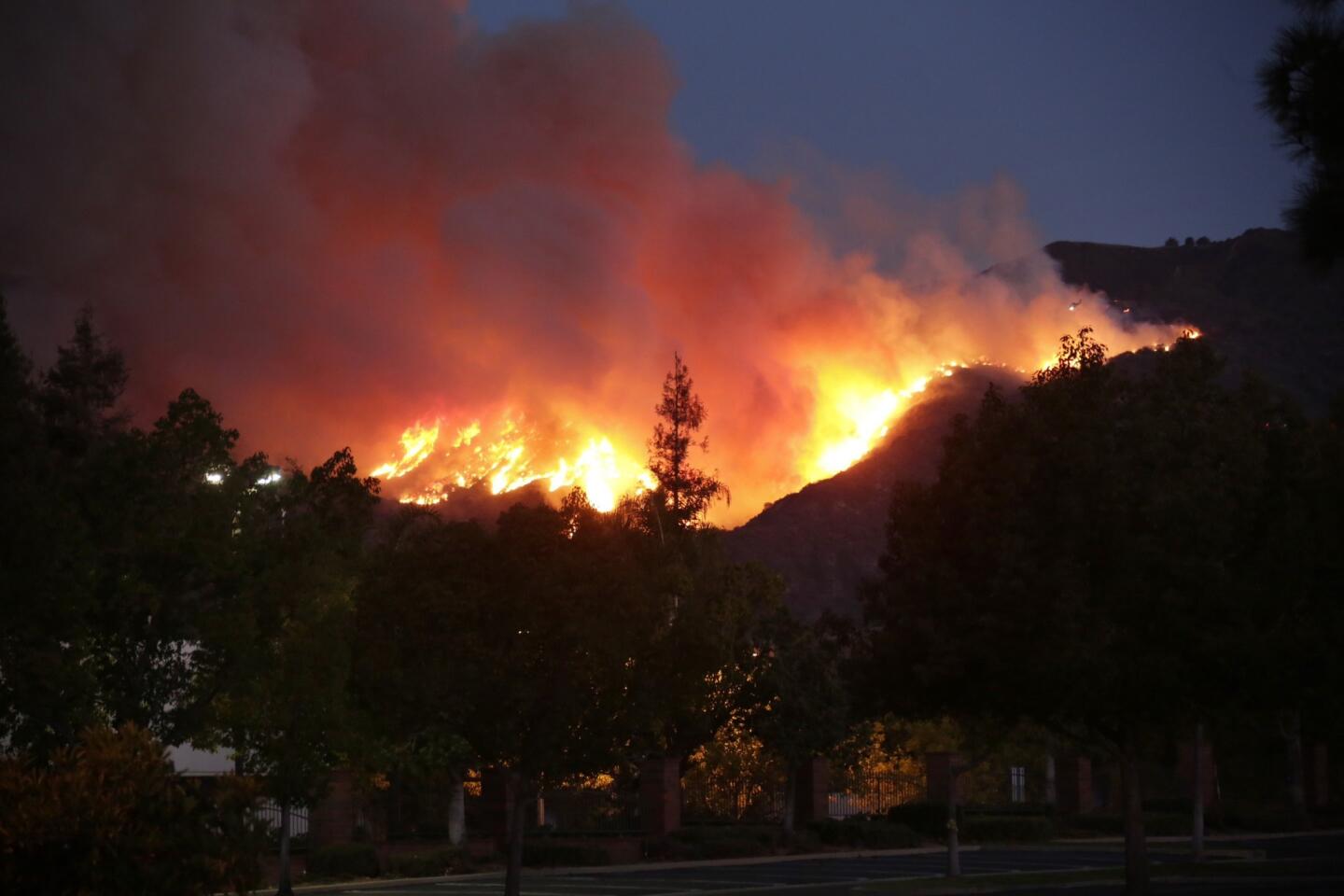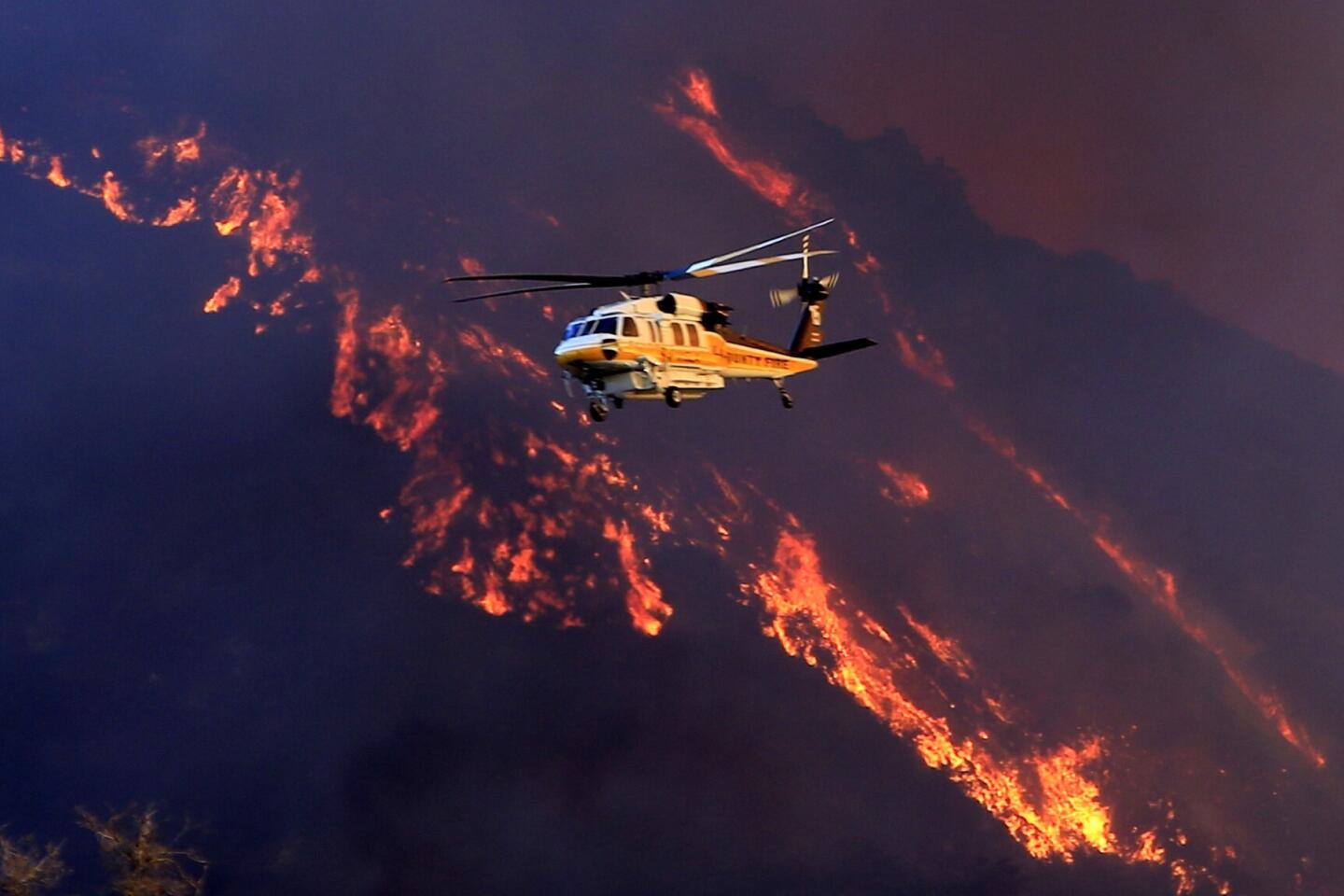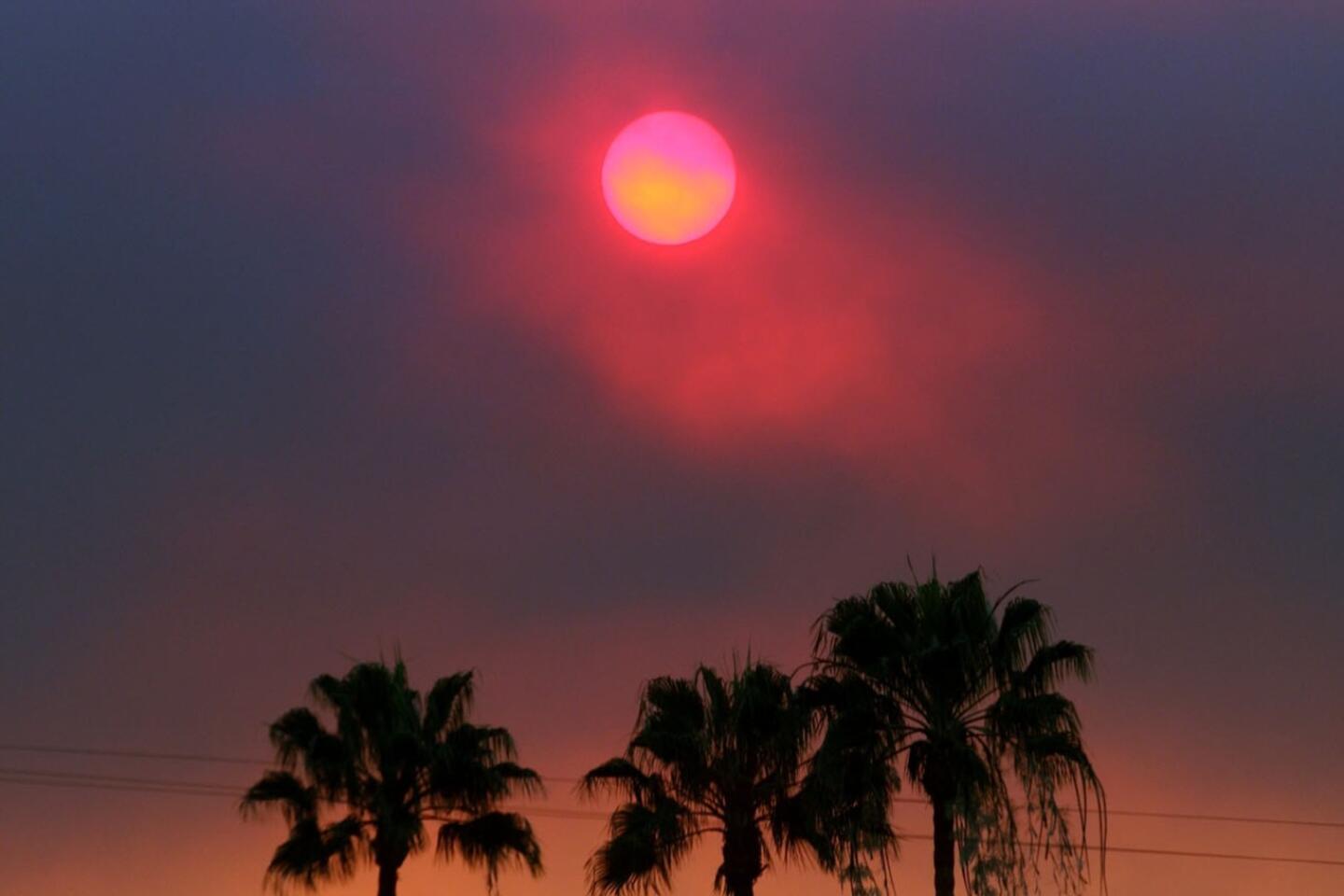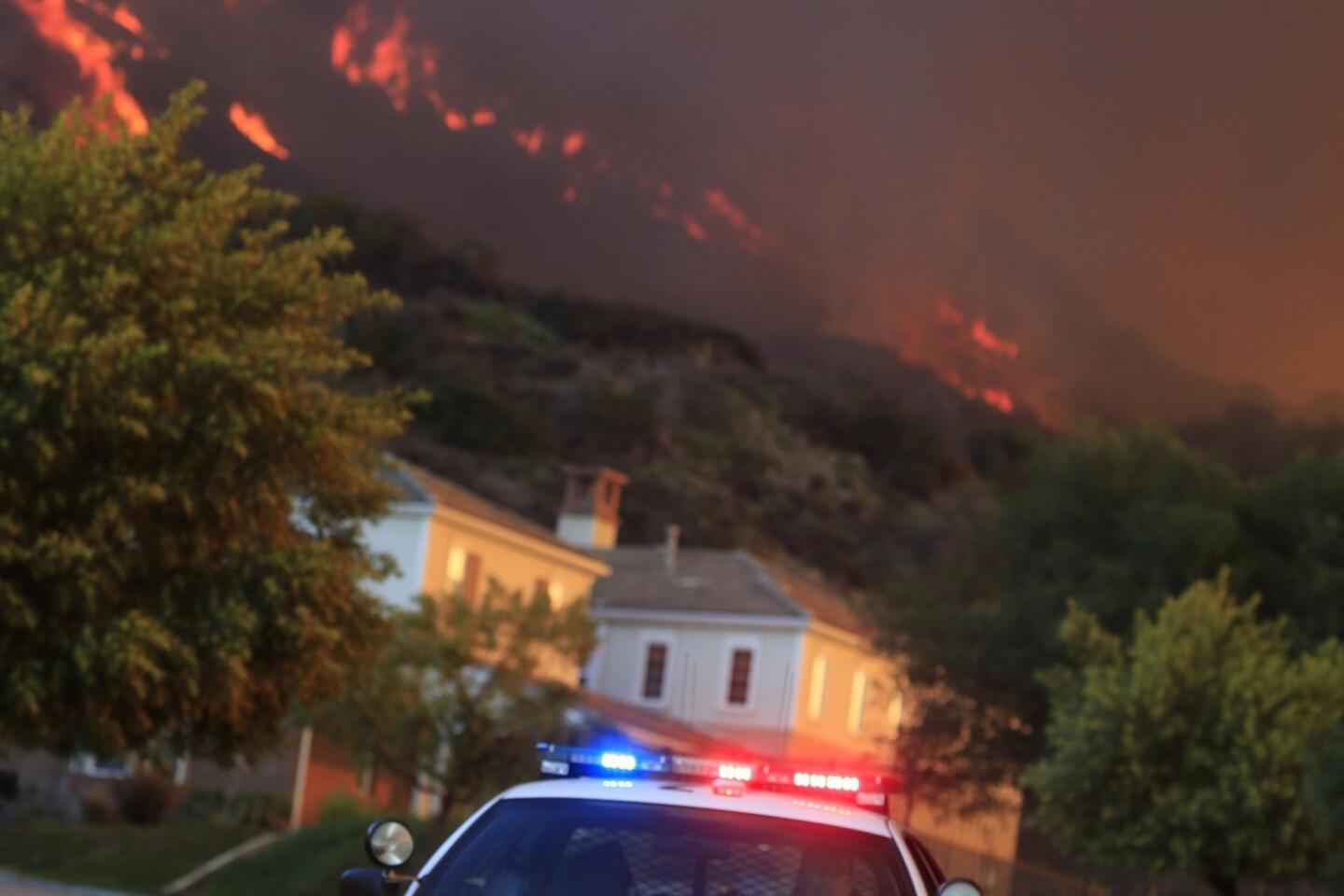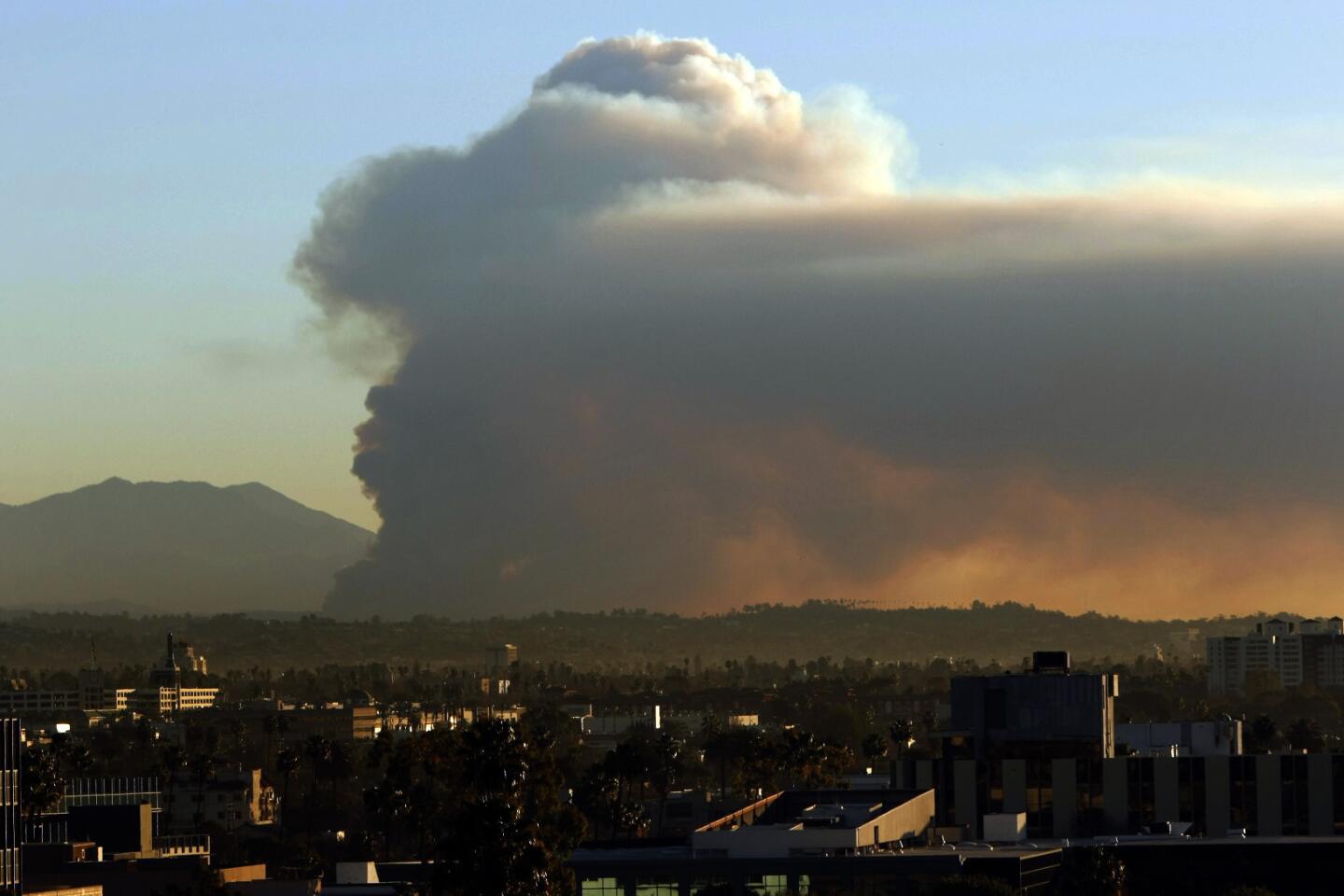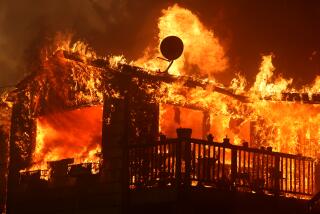California drought brings ‘unprecedented’ fire danger
California is bracing for what officials fear could be an unprecedented winter fire season fueled by record dry conditions that show no signs of letting up.
January is typically a time when forest fire camps and air bases are closed and seasonal firefighters go home. But not this year. the California Department of Forestry and Fire Protection has responded to 150 wildfires so far. During the same period last January, there were none, and the historic average is 25.
Fire officials pointed to coastal fires in Humboldt and San Mateo counties in the last two weeks as examples of the conditions they’re facing. The Humboldt fire spread across 333 acres in four days, shocking firefighters because the region is usually damp with rain at this time of year.
“In the winter when we see a fire…it typically will burn at a slow rate of spread. And take an engine to put it out,” said Calfire spokesman Daniel Berlandt. “This season, it’s taking a much larger response and even some aircraft because the grass and the brush wants to burn.”
Across California, vegetation that typically rehydrates with rain between December and April continues to get dryer and more dangerous. The fires so far this winter have been relatively moderate compared with some of the state’s largest, but officials worry that the fires will get worse as the fuel gets even dryer.
“It’s really is unprecedented. In my career, I’ve not seen this level,” said CalFire Director Ken Pimlott. “It’s the first [weeks] of January and we’re seeing conditions that would normally be occurring in mid-summer. That’s what we’re up against.”
Forecasters say there is little relief in sight. The National Weather Service last week released a forecast for the southwestern United States calling for unseasonably dry and hot conditions.
William Patzert, a climatologist with JPL, said California’s historically wet months of February, March and April look bone dry, and that is going to heighten the fire danger.
“It’s just explosive,” he said. “The grasses are just, they go up like a match…. Everything is good to go.”
Patzert said this season’s parched conditions are part of a longer-term weather pattern in the Pacific Ocean called the Pacific Decadal Oscillation.
From the late 1970s to the mid-1990s, the cycle was in a “positive” phase that pushed warm surface water and wet weather to the eastern Pacific. That brought California pockets of plentiful rain, including infamous El Nino storms. But more recently, the oscillation has trended toward a “negative” phase that’s pushed the wet climate north and east of California.
“If you look at tree rings, these kinds of things have been happening for 1,500 years,” Patzert said. “We don’t really understand why the [change] happens...but what we do know is that once it happens, it’s persistent.”
This week’s Colby fire in Glendora demonstrated the dangers. The fire broke out after days of red-flag conditions that brought hot temperatures and winds to parts of Southern California as much of the rest of the country was in a deep freeze.
The fire started Thursday at 5:51 a.m., quickly consuming 4 to 5 acres. Within half an hour, it had burned 100 to 200 acres. Winds pushed the fire and embers at a rapid rate, ultimately burning more than 1,700 acres.
“I’ve never seen a fire move that fast,” said Los Angeles County Fire Deputy Chief David Richardson.
It took more than 1,000 firefighters and extensive use of water-dropping aircraft to contain the fire. Five homes were destroyed and more than a dozen damaged.
“It wouldn’t have been so bad, but with the fuel and the winds, it lined up in perfect alignment and ran down the canyon,” U.S. Forest Service spokesman Nathan Judy said. “It would’ve been a small contained fire we would’ve had out in a few hours.”
Shyi-ren Lin, 54, was among the residents caught off guard by the fire’s rapid march. He spent the past month trimming his trees and clearing brush around his Glendora hillside home but hadn’t completed the work.
He figured he had time: He and his neighbors get letters every February with instructions for required brush clearance and tree trimming regulations. The deadline is always May 1.
But as the flames crept down toward his home Thursday, he had to reconsider life in the hillside canyon.
“I’m thinking, ‘Should I move?’” Lin said. “The danger will grow if we get more dry months and hotter weather. …I think when we live in this area, we should expect the fire could be at any time, not just the dry months, but any time.”
ALSO:
Colby fire remains 30% contained
Teens reportedly admit sexually assaulting Audrie Pott
joseph.serna@latimes.com
Times staff writers Christine Mai-Duc and Ruben Vives contributed to this report.
More to Read
Sign up for Essential California
The most important California stories and recommendations in your inbox every morning.
You may occasionally receive promotional content from the Los Angeles Times.
